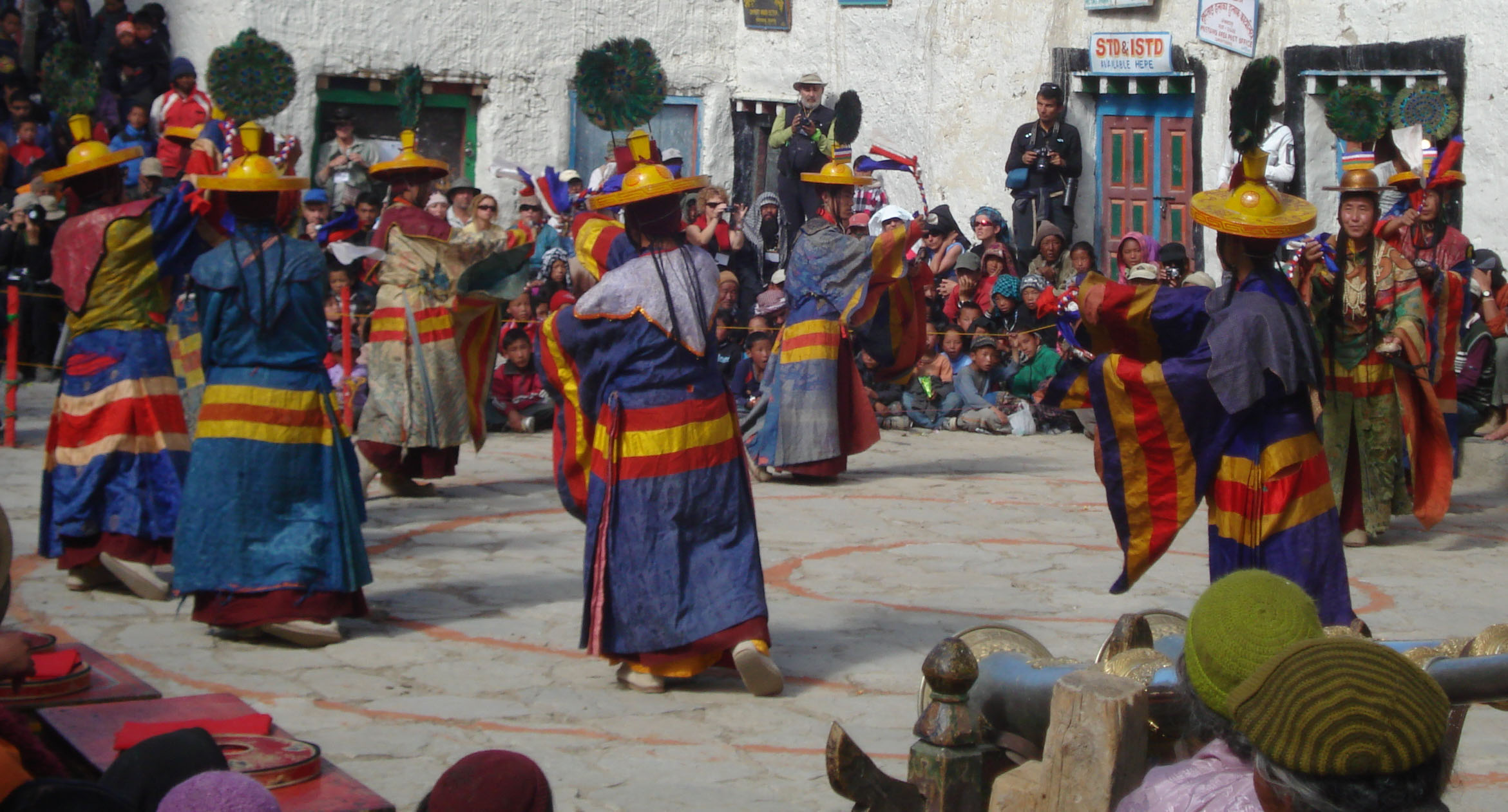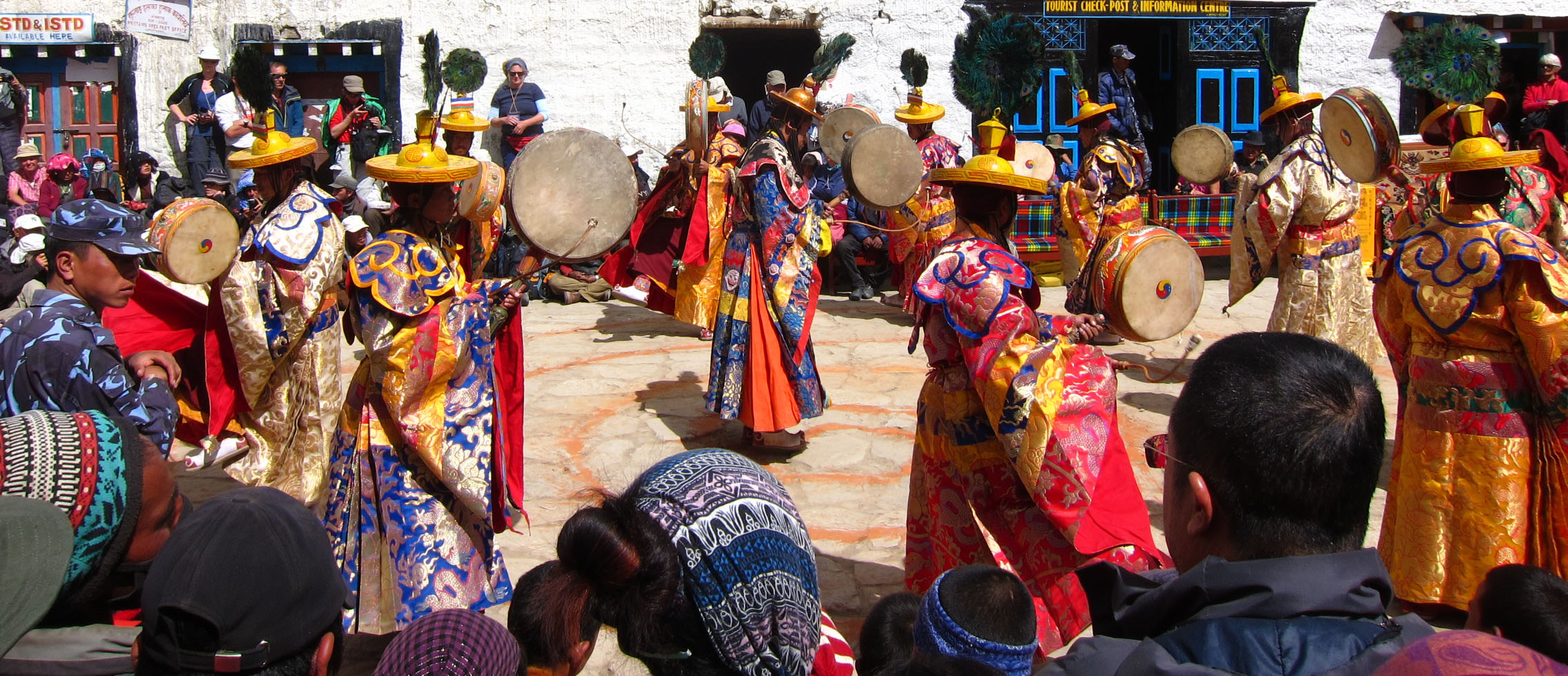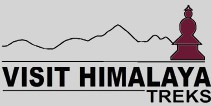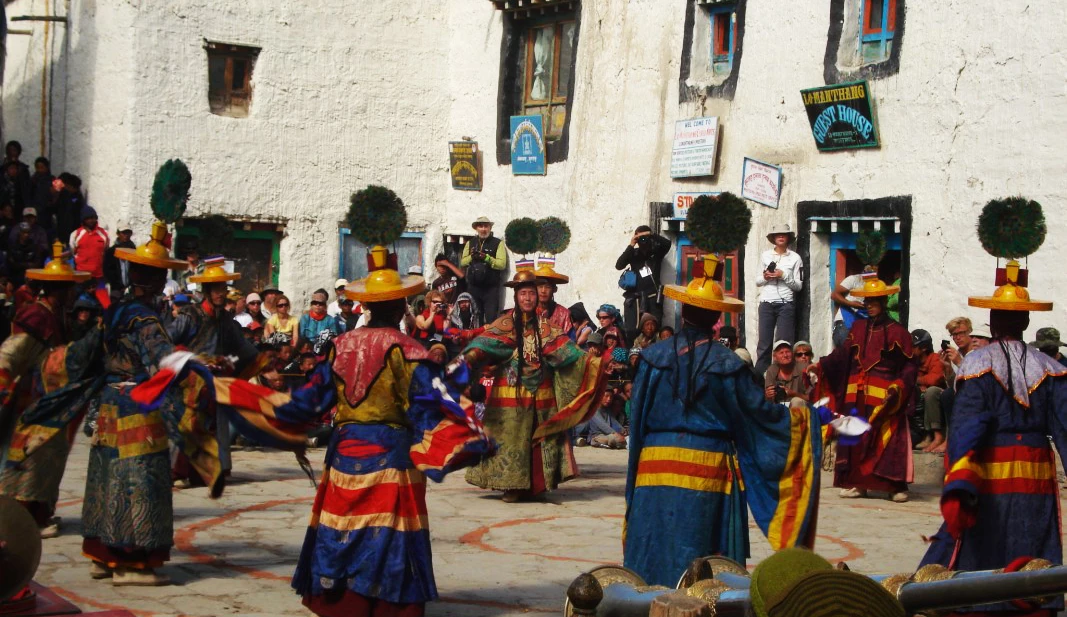The Mustang Tiji Festival in 2026 will be celebrated on May 13, 14, and 15. In 2027, it will take place on June 1, 2, and 3. The Tiji Festival celebration in 2028 is scheduled for May 21, 22, and 23.
Mustang Tiji Festival Trek, Mustang Tiji Festival dates May 13th, 14th, and 15th - 2026.
Mustang Tiji Festival 2026 is a three-day annual event, the Traditional and Historical Buddhist Festival Tiji Festival, is celebrated in the third month of the Tibetan Calendar. The Mustang Tiji Festival date is announced for 2026, Tiji festival is celebrating the months of May 13, 14, and 15 in Upper Mustang (Lo -Manthang) 2026. Tiji festival is becoming more popular every year because it is a unique Buddhist festival celebrated only (Upper Mustang) walled city of Lo Manthang.
When is the Tiji Festival in Mustang 2026?
Mustang Tiji Festival Date 2026 - May 13, 14, and 15 - 2026.
The year 2026 Tiji Festival starts on May 13 and ends on May 15 - 2026. Visit Himalaya Treks organized Mustang Tiji festival trek each year with departure guaranteed. Mustang Tiji Festival is celebrating the annual Tiji Festival in Upper Mustang Lo Manthang. Tiji Festival is a three-day event, always held in the third Tibetan Month (Month of May).
Upcoming Tiji Festival Dates for 2026 to 2028 are given below in the Table.
|
S. N
|
Tiji Festival Year
|
Tiji Festival Celebrating Dates
|
Reserved the Date
|
|
1
|
Tiji Festival 2026
|
13 May, 14 May, and 15 May 2026
|
Book Now
|
|
2
|
Tiji Festival 2027
|
01 June, 02 June, and 03 June 2027
|
Book Now
|
|
3
|
Tiji Festival 2028
|
21 May, 22 May, and 23 May 2028
|
Book Now
|
Mustang Tiji Festival Trek Highlights.
- Three days annual Historical Buddhist Tiji Festival.
- Explore the walled City of Lo Manthang known as the forbidden kingdom.
- Visit the Historical Chossar Cave located close to the Tibet border.
- Visit one of the ancient monasteries Ghar Gumpa built in the eighth century.
- Ruins of Charang village old Buddhist monastery and breathtaking landscapes.
Mustang Tiji Festival is a fascinating annual three-day festival consisting of Tibetan rituals that celebrate the myth of a son who had to save the Mustang kingdom from destruction. The festival is indigenous to Lo-Manthang, Upper Mustang. "Tiji" the name is an abbreviation of the word "Tempa Chirim" which means "Prayer for World Peace". This festival commemorates the victory of Lord Buddha's incarnation Dorjee Sonnu over a demon called Man Tam Ru a vicious creature feeding on human beings and causing storms and droughts.
The Tiji festival usually takes place around May and lasts for 3 days. The monks of Lo Manthang's "Choedhe" monastery perform ritual dances during the celebration. The harassment of Ma Tam Ru Ta (in a dance called "Tsa Chham" on the first day), the birth of Dorjee Sonnu as the demon's son (on the second day called "Nga Chham"), and the attempt to return the demon to Lord Buddha's realm (on the third and final day) are enacted during the performances. Fresh Video of Mustang Tiji Festival celebration.
When is the Tiji Festival? How to celebrate the Mustang Tiji Festival? Why is the Tiji festival celebrated? These are the questions always travelers are want to know, here we would like to share more information about the Mustang Tiji Festival and also would like to include short Clips of Videos about the Mustang Tiji Festival celebration.
Mustang Tiji Festival is celebrating the annual Tiji Festival in Upper Mustang Lo Manthang. Tiji Festival is a three-day event, always held in the third Month of the Tibetan calendar (Month of May). In 2026, Tiji Festival will be celebrated on May 13, 14, and 15 - 2026. It is performed in the square in front of the (Mustang King’s Palace) Tashi Gephel Palace, within the walled city of Lo Manthang, Mustang. Mustang Tiji Festival Trek allows one to witness, celebrate, and take part in this significant festival of the people of Mustang.

Chaam Dance during Mustang Tiji festival in Lo Manthang.
Mustang Tiji festival is one of the most well-known and revered festivals in Upper Mustang. It is a time of celebration and religious pilgrimage for the people of Mustang. The festival initially began as a religious ceremony, to ward off obstacles and suffering that might befall the country. Later it also came to symbolize the hope and strength of the people of Mustang.
Mustang lies in the rain shadows of the Himalayas and has environmental difficulties, yet its situation along the main salt trade route made it a highly prized location regularly invaded by neighboring states. So, the Tiji Festival is a fervent prayer by the King and Queen for peace and stability in Mustang. You can also read our blog about the history of the Tiji festival. The Mustang Tiji festival trek provides such a great opportunity to be involved with local peoples and see their culture, and traditions in this historical land.
How to celebrate the Tiji (Tinji) festival in Upper Mustang?
Mustang Tiji Festival first day:
The morning begins with the assembly of monks and offerings of Vajrakila prayers in Chode Gompa. The afternoon sees a flurry of activity in the square. Amidst the blare of traditional long copper horns or dungchen and the beating of drums and cymbals, an enormous scroll painting or thanka depicting Padmasambhava is unfurled on the south wall of the square.
This thangka is said to be more than 400 years old, and hand embroidered with an image of Padmasambhava and two Dakinis. After offering incense Ngagpas or tantric practitioners, Lo-Manthang offers six bowls of grain and torma on a wooden altar. This is followed by the arrival of monks in red pointed hats who take a seat beneath the unfurled thangka. The Khempo or abbot of the Chode Gompa is seated on a slightly higher dias in the center flanked at the far end by monks blowing the dungchen.
Amidst the chanting of hymns and offering of prayers the masked dances begin. This is eagerly watched by the people gathered in the square of the Palace. The masked dancers start the dance from the Mustang royal palace with a private audience for the King in his private room. The Tsowo who can be recognized by the most elaborate headgear, makes offerings and thus starts the ceremony. Together they then gradually leave the palace and move down the square where the public and travelers eagerly wait.
Over a period of about 2 hours, the Tsacham is performed; a gentle and slow masked dance featuring graceful movements and turns. The Tsowo dances in the center flanked all around by the other dancers in the form of a Mandala. A total of about 52 different forms of steps are performed. The masked dances represent the preparation or invoking of the gods and the purification and preparation of the soil on which the dances are performed. The Tsowo guides his fellow dancers into each form by signaling each change with a verbal command. To the untrained eye, such subtle changes and steps are seamless.
Mustang Tiji Festival second day:
The morning of the second day begins again with offerings of prayers to Vajrakila and an assembly in the monastery. The afternoon starts with the unfurling of another large thangka a near replica of the earlier one. The Masked dances on the second day are more active and are executed in a more aggressive style. Weapons and animal forms are seen in the dance sequence on this day, representing the various means used to drive away evil. The final act is the slaying of the demon. This is depicted by the piercing of the straw effigy by Tsowo with the religious dagger. This symbolizes the evil demon being slain by the deity Dorje Shunu. The straw effigy is then thrown into the air.
Mustang Tiji Festival Third day:
On the third and final day the morning begins again with offerings of prayers to Vajrakila by the monks in the monastery. In the afternoon, Tsowo offers ritualistic offerings of nectar as an appeal for help from all the gods. Before and after the effigy is cut, there are again dances by monks wearing masks depicting animals. Finally, the dances come to an end with the formation of a raucous procession led by the masked dancers and followed by the King and members of the royal family, representatives of the village development committees, and the local people.
In the Mustang King’s Palace, the final celebrations are made by offering prayers. There is much rejoicing with the offering of Tsampa to the gods amidst a whirl of white on the rooftop of the palace. Finally, there is an exchange of greetings between the King and Khempo and other monks. The peoples of Mustang express their great luck and fortune at being able to witness yet another Tiji Festival and they pray that many more good years follow.

Monks Dance during the Tiji festival in Mustang Nepal.
Tiji Festival 2026 date and Itinerary,
May 03 - 2026: Arrive in Kathmandu. (1338 meters).
May 04 - 2026: Sightseeing and Trek Preparation.
May 05 - 2026: Drive to Pokhara. (900 meters).
May 06 - 2026: Fly to Jomsom and trek to Kagbeni. (2800 meters).
May 07- 2026: Trek to Chele. (3050 meters).
May 08 - 2026: Trek to Syangmochen. (3800 meters).
May 09 - 2026: Trek to Dhakmar. (3500 meters).
May 10 - 2026: Trek to Charang. (3600 meters).
May 11- 2026: Trek to Lo-Manthang. (3720 meters
May 12 - 2026: Explore around Lo-Manthang.
May 13 - 2026: Tiji Festival (1st day). Tiji Festival Starts. (1st day)
May 14 - 2026: Tiji Festival (2nd day). Tiji Festival continues. (2nd day)
May 15 - 2026: Tiji Festival (3rd day). Tiji Festival Ends (3rd day)
May 16 - 2026: Trek to Ghami. (3510 meters).
May 17 - 2026: Trek to Samar. (3620 meters).
May 18 - 2026: Trek to Chhusang. (2980 meters
May 19 - 2026: Trek to Muktinath. (3700 meters).
May 20 - 2026: Trek to Jomsom. (2720 meters).
May 21 - 2026: Fly back to Kathmandu via Pokhara.
May 22 - 2026: Free day at Kathmandu.
May 23 - 2026: Departure.
















